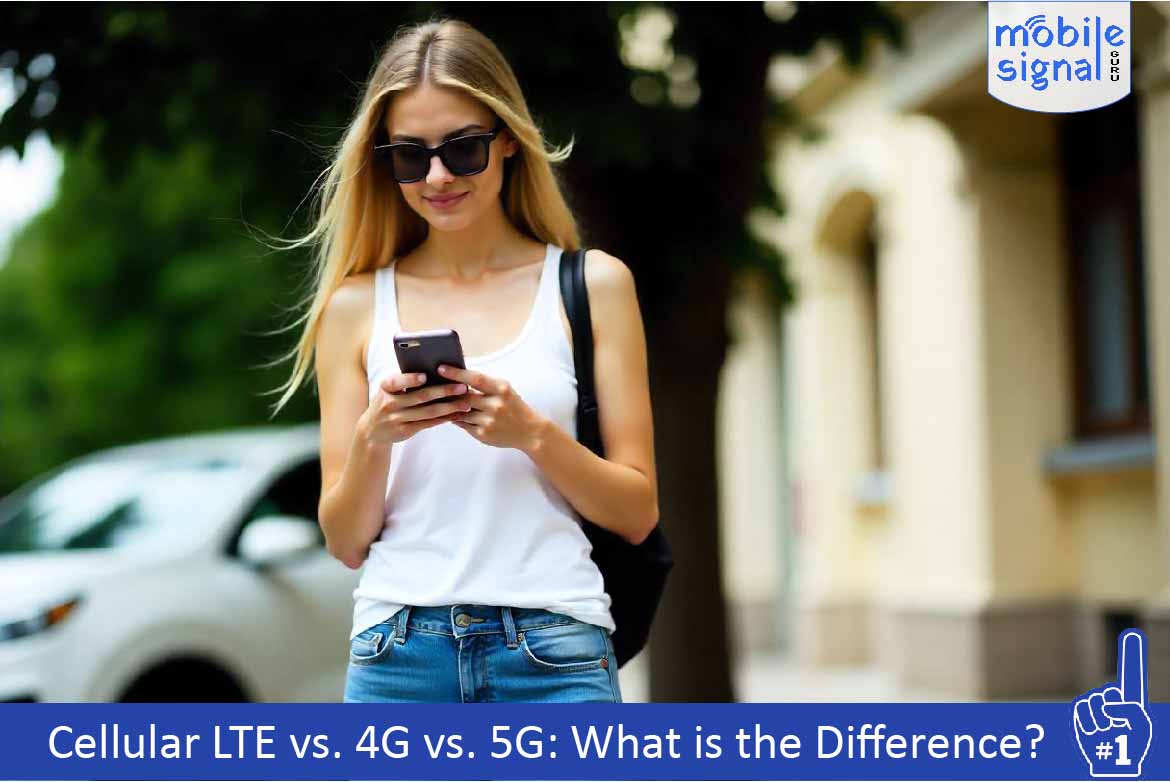As mobile technology continues to evolve, terms like LTE, 4G, and 5G are used frequently. But what do they actually mean? If you’re not a tech expert, these terms can sound confusing. In this article, we’ll break down the differences between LTE, 4G, and 5G. We’ll keep the explanations simple and easy to understand. By the end, you’ll have a clear idea of how these technologies impact your mobile experience.
What is LTE?
LTE stands for Long Term Evolution. It’s a standard for wireless broadband communication used in mobile devices. While many people think LTE and 4G are the same, they are slightly different. LTE is often referred to as “4G LTE,” which means it is a type of 4G, but not the full version of it.
When LTE was introduced, it was a significant upgrade from 3G. It offered faster internet speeds and lower latency. This meant that websites loaded faster, videos streamed more smoothly, and online gaming became much more responsive.
However, LTE is not considered “true 4G.” Initially, it didn’t meet the official speed requirements to be called 4G. But because it was much faster than 3G, carriers started branding it as “4G LTE.” This branding made it easier for customers to understand that it was a step up from 3G, even though it wasn’t quite 4G.
What is 4G?
4G stands for the fourth generation of mobile network technology. It’s the successor to 3G and offers much faster speeds and lower latency. Officially, for a network to be classified as 4G, it must meet certain speed standards set by the International Telecommunication Union (ITU). These standards include:
- Download speeds of at least 100 Mbps for mobile devices
- Upload speeds of 50 Mbps
In reality, many early 4G networks couldn’t reach these speeds. That’s where LTE comes in. LTE was an improvement over 3G but still didn’t meet all the criteria to be called “true 4G.” Later versions of LTE, known as LTE-Advanced, managed to reach the official 4G speeds. This is why some providers now advertise their networks as “4G LTE-Advanced.”
In summary, 4G networks provide faster speeds and more reliable connections than previous generations like 3G. It made mobile internet much more usable for things like video streaming, online gaming, and faster browsing.
What is 5G?
5G stands for the fifth generation of mobile network technology. It’s the latest and most advanced standard available today. The main selling points of 5G are:
- Much faster speeds compared to 4G and LTE
- Extremely low latency, which is the time it takes for data to travel
- Greater network capacity, which means it can support more devices connected at the same time
While 4G offered high speeds, 5G takes it to a whole new level. In fact, 5G networks can deliver speeds up to 100 times faster than 4G. This opens up possibilities for new technologies and services, such as self-driving cars, augmented reality, and ultra-high-definition video streaming.
5G is also designed to handle more devices. As the number of smartphones, smart devices, and other internet-connected gadgets grows, 4G networks can become congested. 5G solves this problem by offering more bandwidth and better handling of multiple devices at once.
Key Differences Between LTE, 4G, and 5G
Now that we understand what LTE, 4G, and 5G are, let’s look at the main differences between them:
1. Speed
- LTE: Offers faster speeds than 3G but doesn’t reach “true 4G” speeds. Average download speeds range from 5 to 12 Mbps.
- 4G: Officially offers download speeds of 100 Mbps or higher. In real-world conditions, 4G networks offer speeds between 20 and 50 Mbps.
- 5G: Significantly faster than 4G, with speeds reaching up to 10 Gbps. In real-world conditions, most users can expect speeds between 100 Mbps and 1 Gbps.
2. Latency
- LTE: Has an average latency of around 50 milliseconds. This is acceptable for most mobile internet use.
- 4G: Offers lower latency than LTE, with an average latency of around 30 milliseconds.
- 5G: Has ultra-low latency, often below 10 milliseconds. This makes it ideal for real-time applications like online gaming, virtual reality, and autonomous vehicles.
3. Capacity
- LTE: Handles fewer devices compared to 4G and 5G. As more people connect to LTE networks, congestion can occur, slowing down the speeds.
- 4G: Offers better capacity than LTE but can still experience congestion, especially in busy urban areas.
- 5G: Has a much higher capacity, allowing many more devices to connect without affecting speeds. This makes it perfect for smart cities and the growing number of connected devices.
4. Coverage
- LTE: Offers widespread coverage. Since LTE is an upgrade from 3G, it is available in most areas where 3G networks are.
- 4G: Provides more coverage than 5G but is still expanding in rural areas. It is widely available in cities and towns.
- 5G: Has limited coverage at the moment. 5G networks are being rolled out gradually, and coverage is currently focused on major cities.
Practical Applications of LTE, 4G, and 5G
Each generation of mobile technology brings new possibilities. Let’s look at how LTE, 4G, and 5G are used in everyday life:
LTE in Everyday Use
LTE is still widely used because it offers good speed and coverage. Most people use LTE for:
- Browsing the web: LTE speeds are more than enough for regular internet browsing.
- Social media: Scrolling through social media, watching videos, and sending messages all work smoothly on LTE.
- Video streaming: While not as fast as 4G, LTE can handle high-definition video streaming on platforms like YouTube or Netflix.
4G in Everyday Use
4G offers faster speeds and more reliable connections than LTE, making it ideal for:
- HD video streaming: Watching high-definition videos without buffering is much easier with 4G.
- Online gaming: Lower latency on 4G makes online gaming smoother and more responsive.
- Video calls: With higher speeds and more stable connections, video calls on platforms like Zoom or FaceTime are seamless.
5G in Everyday Use
5G is designed to handle new technologies and more advanced use cases. Some exciting possibilities include:
- Augmented reality (AR): 5G can support AR applications that require real-time data processing.
- Autonomous vehicles: The low latency of 5G allows self-driving cars to communicate quickly with other vehicles and infrastructure.
- Smart cities: 5G’s high capacity makes it ideal for powering smart city technologies, including traffic management and smart utilities.
5G Rollout: What to Expect?
5G is still in its early stages of deployment. While some major cities have 5G networks, it will take time for the technology to reach rural areas. Many users will continue using LTE and 4G for several more years. However, as 5G becomes more widespread, we will see its impact on a range of industries.
Which Technology Should You Use?
Choosing between LTE, 4G, and 5G depends on your needs and location. Here are some factors to consider:
- If you need reliable coverage: LTE is still widely available and works well in most areas. If you live in a rural area or travel frequently, LTE might be your best option.
- If you want faster speeds: 4G is an excellent choice for users who need faster internet for tasks like streaming, gaming, or video calling.
- If you live in a city and want the latest technology: 5G is the future. If you live in a city where 5G is available, upgrading to a 5G-compatible phone will offer you the fastest speeds and most advanced features.
Conclusion
In conclusion, LTE, 4G, and 5G are different stages of mobile network technology. LTE provides decent speeds but falls short of true 4G. 4G offers faster speeds and lower latency, while 5G brings groundbreaking improvements in speed, latency, and capacity. As 5G networks continue to expand, they will unlock new possibilities for how we use technology in our daily lives.
Whether you’re using LTE, 4G, or 5G, each offers its own benefits depending on your needs. Over time, as 5G becomes more widely available, it will undoubtedly change the way we connect to the internet and use mobile devices. To buy mobile signal boosters to boost any type of signal i.e., LTE, 4G, and 5G you can buy from our shop. If you have any questions regarding any of our products please contact our support team.
 Australia (AUD)
Australia (AUD) Denmark (DKK)
Denmark (DKK) France (EUR)
France (EUR) Germany (EUR)
Germany (EUR) Ireland (EUR)
Ireland (EUR) Italy (EUR)
Italy (EUR) Malta (EUR)
Malta (EUR) Netherlands (EUR)
Netherlands (EUR) New Zealand (NZD)
New Zealand (NZD) Norway (NOK)
Norway (NOK) Spain (EUR)
Spain (EUR) Sweden (SEK)
Sweden (SEK) UAE (AED)
UAE (AED) United Kingdom (GBP)
United Kingdom (GBP)
